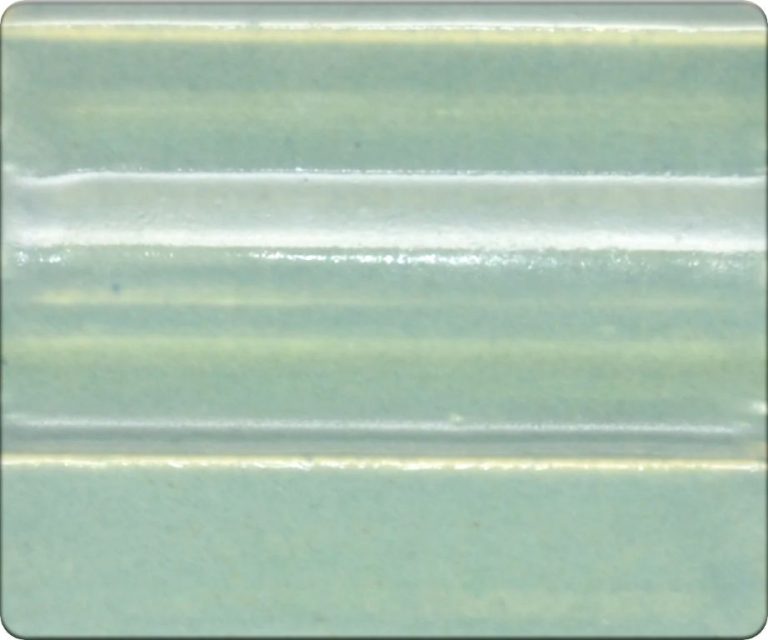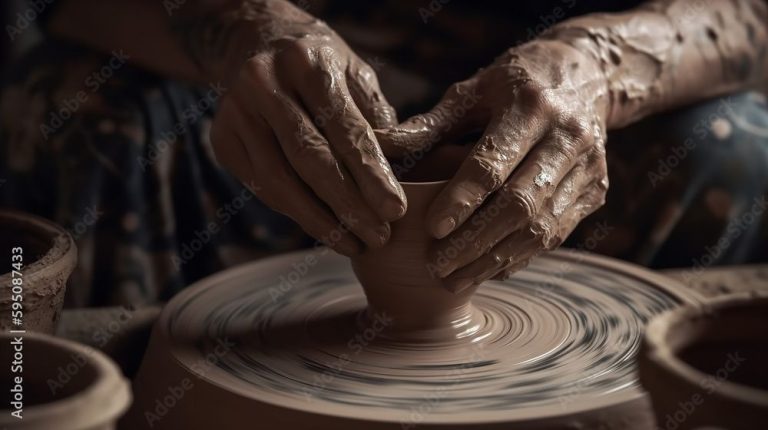How Can We Make Cubic Shape By Clay?
Clay is an ancient and versatile modeling material composed of fine-grained minerals, water, and sometimes organic matter. The three main types of clay are earthenware clay, stoneware clay, and porcelain clay. Clay has flexible yet durable properties that make it ideal for sculpting and shaping objects by hand. When fired at high temperatures, clay undergoes physical and chemical changes to become hard and impermeable ceramic.
This guide will walk through the simple process of making a cubic clay shape. Cubes are one of the foundational 3D geometric shapes and can serve as building blocks for more complex clay structures. With some basic techniques, clay’s malleable properties can easily be formed into a perfect cube.
Gather Materials
Before beginning any clay project, you’ll need to gather the necessary materials. Here are the basic supplies you’ll need to make a simple cubic shape from clay:
-
Clay – Polymer clay or air-dry clay both work well. Make sure you have enough to sculpt your desired size cube.
-
Rolling pin – Helpful for flattening and smoothing the clay as you work.
-
Ruler or measuring tools – Allow you to cut precise lengths when making straight edges.
-
Sculpting tools – Wooden skewers, toothpicks, and specialized clay tools help shape details.
-
Work surface – This could be a table covered in paper, a cutting mat, etc. Provides an easy-to-clean workspace.
Before you begin sculpting, make sure you have gathered each of these basic supplies. Having the right clay tools will make the process much easier.
Prepare the Clay
Before you can start shaping your clay, it’s important to properly prepare and condition it. This will make the clay easier to work with and help achieve the best end results.
Start by kneading and softening the clay. Take a lump of clay and knead it for several minutes, pressing and folding repeatedly to warm it up. This softens the clay and makes it more malleable. As you knead, apply firm yet gentle pressure to avoid overworking the clay.
Kneading also helps remove any air bubbles that may be trapped in the clay. Air bubbles can lead to weak spots and cracks once the clay dries. To remove bubbles, press down and push the clay outwards as you knead. You’ll notice small popping sensations as the bubbles are released.
Once the clay is warm, soft, and bubble-free, it’s ready to be shaped into your desired cubic form. Properly conditioned clay will be smooth, flexible, and easy to manipulate.
Form the Base
The first step in forming the cubic shape is to create the base. For this, you’ll want to roll the clay out flat into a square that will serve as the foundation.
Take a ball of clay and press it out on a flat surface into a rough circular shape. Using a rolling pin or your palm, roll the clay out evenly in all directions until you have a flat square sheet. Try to get it as even thickness as possible. The size will depend on how large you want the final cube to be, but aim for around 1/4-1/2 inch thick.
Check the clay sheet by measuring the sides to make sure they are equal lengths. Trim any uneven edges with a knife or clay cutting tool. You now have a nicely formed square base for building up the cube.
Build Up the Sides
Creating the walls is an important step in building the cube shape out of clay. After your base has been formed, you will need to add clay vertically on all sides to create the cube’s walls.
To build up the sides, take some clay and roll it into strips or “snakes.” Make the clay rolls approximately the length you want for your cube’s height. Attach these clay rolls vertically on all sides of the base, working your way around the entire cube.
Press the rolls firmly onto the base so they stick. If needed, add some water between the clay rolls and base to help them adhere better. Continue adding clay rolls until all 4 walls are built up to the desired height for your cube.
Try to keep the walls evenly spaced and as vertical as possible. Having neat, straight walls will help form a nice cubic shape. If the walls start to slope or lean, add additional clay to prop them up.
Once your cube’s walls are formed on all sides, you have successfully built up the sides and formed the basic cubic shape!
Smooth the Edges
Once you have formed the basic cube shape, it’s time to smooth the edges and refine the overall form. Pay special attention to blending together any seams where the sides of the cube meet. This will help create a uniform, seamless look.
Use your fingers or a sculpting tool to gently smooth over the edges, pressing and smoothing the clay. Work slowly and carefully. Too much pressure too quickly can distort the shape. Focus on softening any sharp corners or rough areas. The goal is to round the edges into smooth curves.
You may need to add a small amount of water or clay slip to areas that are difficult to blend. This will help soften and merge the clay. Just be careful not to over-wet the clay or it may become too sticky.
Rotate the cube in your hands as you work. Check it from all angles to ensure the edges are blending evenly. Refine the shape until you achieve the smooth, refined edges you desire. Pay attention to keeping the sides square, without bulging or curving. Gentle, patient smoothing is key for best results.
Once satisfied with the smoothness, use the sculpting tool to sharpen the corners back to 90 degree angles. Work carefully to avoid rounding the edges you just perfected. Crisp, clean corners will give your cube a precise, geometric look.
Refine the Cube
Once you have the basic cubic shape formed, it’s time to refine it into a perfect cube. Check the proportions from all angles and sides to ensure the cube looks symmetrical. Use a ruler or measuring device to confirm each side is the same length. If the sides are uneven, gently push and smooth the clay to achieve equal dimensions.
Now you can add finer details and sharpen the edges and corners. Use your fingers, sculpting tools, or wet wooden tools to sharpen the lines and corners. Be careful not to flatten or distort the overall cubic shape. You want to maintain the blocky, geometric profile. Work slowly and gently as you refine. Let the clay firm up a bit more if needed.
Consider adding decorative elements like patterns, textures, or designs to personalize your clay cube. You can use clay tools, cookie cutters, or toothpicks to imprint shapes or letters into the sides. Get creative with the detailing while keeping the cubic form intact.
Allow to Dry
Once you have sculpted your cubic clay shape, you will need to allow it adequate time to dry and harden before finishing it. There are a couple options for drying your clay cube:
Air Drying
Allowing the clay to air dry is the easiest and most basic drying method. Simply set aside your finished clay cube in a safe place where it won’t be disturbed. Make sure it’s resting on a flat surface and not touching anything else.
Air drying takes the longest, usually 1-3 days depending on factors like the size and thickness of your cube and the ambient temperature and humidity. Check on the cube periodically to see if it has hardened sufficiently before applying any finishing techniques.
Oven Drying
You can speed up the drying process by baking the clay cube in the oven. This works best with clays designed for oven hardening. Carefully place your cube on a baking sheet or foil and bake it at the temperature and time specified on the clay packaging, usually around 300°F for 15-30 minutes.
The cube should be dry and hardened once removed from the oven. Allow it to cool completely before applying any finishing techniques.
Finish and Display
Once your clay cube is fully dried and hardened, you have a few options for finishing it off. The first step is sanding – using a sheet of fine grit sandpaper, you can smooth out any small cracks or uneven surfaces. Sand gently and carefully to avoid changing the cube shape. Once sanded, your cube is ready for painting, glazing, or leaving as-is.
Acrylic craft paints work well for painting clay. You can paint the entire cube a single solid color, use multiple colors in a design, or just accent certain edges or sides. Allow paint to dry fully before applying any clear finish like glaze or varnish. For glazing, there are specific glazes formulated for clay that create a glossy finish and hard seal. Brush or dip glaze over the cube, letting any excess drip off. Allow glaze to fully dry/cure according to package directions.
However you choose to finish your cube, you’ll likely want to display it when done! Set it on a shelf, use it as a paperweight, or give it away as a handmade gift. Having carefully crafted a cubic shape from clay, you can now show off your creation and geometric skills.
Troubleshooting
When working with clay, there are a few common issues that can arise. Here are some tips for troubleshooting problems with cracking, breakage, and deformities in your clay cubes:
Fix Cracking
Cracks can occur if the clay dries too quickly or unevenly. To prevent cracks, keep the clay wrapped in plastic when not working with it so it retains moisture. While working, mist the clay with water to keep it from drying out. If cracks do form, add water to the area and massage it gently to blend the clay back together.
Fix Breakage
Clay can break if it gets too thin in certain areas or if bumped while drying. To fix breaks, moisten the broken edges slightly and press them back together, smoothing over the seam. Let it dry fully before handling again. Support thin areas that are prone to breaking with extra clay on the inside while constructing the cube.
Fix Deformities
If your cube loses its shape while drying, the clay likely wasn’t allowed to dry evenly. Next time, build the cube thicker and allow it to dry completely before moving it. To fix a deformed cube, carefully wet the clay and reshape it by hand, then allow it to dry fully in the desired cubic form.




